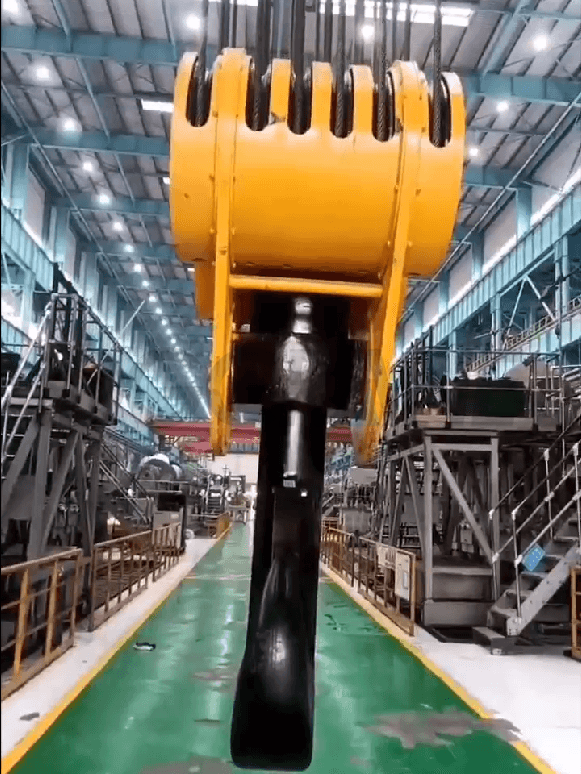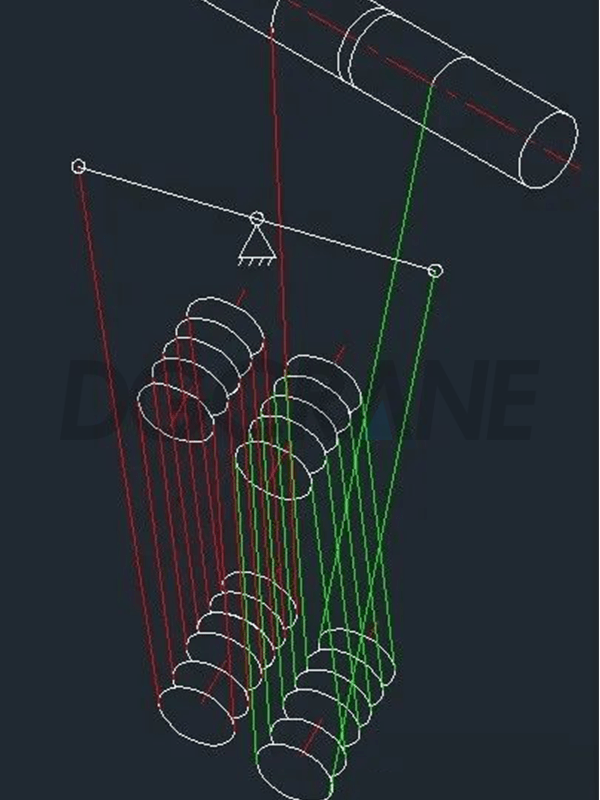-
INDUSTRIES
-

Precast Concrete Plant
-

Steel Industry
-

Paper Industry
-

Waste to Energy and Biomass Industry
-

Power Industry
-

Overhead Cranes for Automotive Production: Smart Solutions for Enhanced Efficiency
-

Port Machines Industry
-

Manufacturing Industry
-

Different Types of Container Cranes, Shipyard Cranes, Cargo Cranes Used in Port, Harbor and Quay
-

Overhead Cranes for Timber Lifting: Efficient and Safe Wood Handling
-

Overhead Cranes for the Aviation Industry: Streamlining Aircraft Assembly, Maintenance, and Repair
-

Overhead Cranes for Food and Beverages: Ideal for improving productivity and food safety
-

Overhead Cranes for Aerospace Industry: Key Role in Efficient Rocket Manufacturing and Launch
-
-
EQUIPMENT
-
Overhead Cranes
-

Single Girder Overhead Crane
-

Double Girder Overhead Crane
-

Underslung Cranes
-

Workstation Overhead Cranes
-

Low Headroom Overhead Cranes
-

Grab Bucket Overhead Crane
-

Electromagnetic Overhead Cranes with Lifting Magnet
-

Electromagnetic Overhead Cranes with Magnet Beam
-

Manual Overhead Cranes
-

Double Trolley Overhead Cranes
-

LDP Single Girder Overhead Cranes
-
- Eot Cranes
- Gantry Cranes
- Jib Cranes
- FEM Standard Crane & Hoist
- Hoist & Winch Trolley
- Light Cranes
- Explosion Proof Cranes and Hoists
-
Special Cranes
-

35-65t Clamp Overhead Crane
-

Boat Hoists
-

Boat Jib Crane
-

Yacht Davit Crane
-

Rail Mounted Container Gantry Crane
-

Cleanroom Overhead Cranes
-

YZ Ladle Handling Cranes
-

LDY Metallurgical Single Girder Crane
-

Charging Cranes for Steel Production
-

Insulated Overhead Cranes
-

Gantry Crane for Subway and Metro Construction
-

Forging Crane
-

Quenching Overhead Crane
-

Baking Multifunctional Crane
-
- Port Cranes
- Electric Transfer Carts
-
Overhead Cranes
-
CRANE PARTS
- Crane Wheel Range
- Crane Spreader
- Crane Drives
-
Crane Electrical Equipment
-

Overload Limiter
-

Crane Cabin
-

Crane Power Supply System
-

Explosion Proof Crane Radio Remote Controls
-

Joystick Type Crane Radio Remote Controls
-

Pushbutton Type Crane Wireless Remote Controls
-

Single-pole Insulated Conductor Rails
-

Enclosed Conductor Rails
-

Seamless Conductor Rails
-

Copperhead Conductor Rails
-

Overhead Crane Cables
-
- Other Cranes Parts
\
- ABOUT US
- CONTACT US
Table of Contents
A large-tonnage, multi-reeved crane hook showed skewing of the hook pulley shaft, which was no longer in the horizontal plane during operation. When lifting or lowering, the hook tilted upward or downward on one side. We analyzed the causes and proposed solutions for reference.

Based on the hook arrangement shown in the picture, the winding diagram can be inferred as follows:

Causes of Hook Skewing
Essentially, hook skewing occurs due to uneven tension or asynchronous movement of the wire ropes across the pulleys. For multi-reeved hooks, the level of skewing shown in the picture is a relatively common phenomenon.
When the drum winds or releases the rope, friction exists between the wire rope, pulleys, and pulley bearings. As a result, the wire rope closest to the drum moves first, followed by the second row of pulleys, the third row, and so on. The rope on the fixed-point side changes last.
As the reeving ratio increases, the rope movement on the drum side becomes much greater than on the fixed-point side. At this stage, the hook pulley shaft appears skewed. Once winding or unwinding continues and all pulleys rotate, the rope tensions tend to equalize. Due to the hook self-weight and the load gravity, the pulley shaft tends to return to a horizontal position.
Solutions of Hook Skewing
Dual-drum or four-line single drum winding
In a single-drum dual-line reeving arrangement, the pulleys near the fixed point engage later under high reeving ratios, creating rope tension differences. By canceling the fixed point and ensuring both rope lines wind or release simultaneously, the pulley shaft becomes more stable.
Replace ropes and bearings
Use wire ropes with better flexibility and bearings with lower friction resistance, and ensure proper lubrication of both ropes and bearings.
Increase hook self-weight
A heavier hook provides greater stabilizing torque, reducing the tendency of skewing.
Each method has its own effects and drawbacks, and may involve additional costs. In practice, slight skewing is a natural phenomenon and acceptable as long as safety is not compromised.
Note: If the reeving system does not include a balance beam as shown in the schematic, the two wire ropes may carry uneven loads.
Conclusion
Crane hook skewing is mainly caused by uneven rope tension and asynchronous motion. By improving the reeving system, optimizing component selection, and increasing hook weight, the skewing phenomenon can be effectively mitigated. In practical applications, the most suitable solution should be chosen based on equipment conditions, while ensuring safe operation.

Zora Zhao
Expert in Overhead Crane/Gantry Crane/Jib Crane/Crane Parts Solutions
With 10+ years of experience in the Crane Overseas Export Industry, helped 10,000+ customers with their pre-sales questions and concerns, if you have any related needs, please feel free to contact me!
WhatsApp: +86 189 3735 0200
Email: zorazhao@dgcrane.com
Contact Details
DGCRANE is committed to providing the professional Overhead crane products and relavent service. Exported to Over 100 Countries, 5000+ Customers Choose Us, Worth to be Trusted.
Get In Touch
Fill out your details and someone from our sales team will get back to you within 24 hours!
Subscribe to our newsletter
The latest DGCRANE price list, news, articles, and resources.
- Overhead Cranes
- Low Headroom Overhead Cranes
- Double Girder Overhead Crane
- Grab Bucket Overhead Crane
- Top Running Overhead Crane: Wide Application and Easy Maintenance
- Coker Cranes for Harsh Environments: High Temperature and Corrosion Resistant Design
- Overhead Cranes for Concrete Pile Precast Workshop: Versatile Solutions for Demanding Operations
- Single Girder Overhead Cranes
- Eot Cranes
- Single Girder Eot Cranes
- Double Girder Eot Cranes
- Underslung Cranes
- Light Cranes
- Adjustable Gantry Cranes: Easy to Move, Safe, and Space-Efficient
- Foldable Aluminum Gantry Crane: Lightweight, Strong, and Portable
- Freestanding Workstation Bridge Crane: Lightweight, Modular and Adaptable Material Handling Solution
- Ceiling Mounted Workstation Bridge Crane: Ideal for Tight Spaces and Complex Layouts
- Workstation Overhead Cranes
- Monorail Overhead Cranes
- Workstation Jib Cranes
- Electric Hoists
- Gantry Cranes
- Shipyard Gantry Cranes: Specialized Lifting Solutions for Shipyard Operations
- Truss Gantry Cranes: Cost-Effective, Wind-Resistant, and Perfect for Large Spans
- FEM Double Girder Gantry Crane with Open Winch: European Performance, 20% Cost Saving
- Different Types of Small Portable Aluminium Gantry Cranes: Cost Effective
- Single Girder Gantry Cranes
- Double Girder Gantry Cranes
- Semi Gantry Cranes
- Casting Yard Gantry Cranes
- Container Gantry Cranes: RTG & RMG Solutions for Ports and Terminals
- Portable Mobile Gantry Cranes: Flexible, Movable and Space-Saving
- FEM Standard Crane & Hoist
- FEM Standard Overhead Cranes
- FEM Standard Gantry Cranes
- FEM Standard Jib Cranes
- FEM Standard Wire Rope Electric Hoists
- FEM Standard Electric Chain Hoists
- Hoist & Winch Trolley
- Low Headroom Wire Rope Electric Hoist: Compact Design for Efficient Lifting in Tight Spaces
- Electric Hoist for Molten Metal: High-Temperature, Safe Lifting for Metallurgical Environments
- Pneumatic (Air) Chain Hoists: Ideal for Explosion-Proof Environments
- Lever Hoists: Compact, Versatile Manual Lifting Tool
- 6 Double Girder Trolley Electric Hoists for Overhead Cranes: Custom Solutions for Every Lifting Need
- Manual Chain Hoists: Alloy Steel Construction for Smooth and Safe Lifting
- Electric Wire Rope Hoists
- Chain Hoists
- Crane Trolley
- Electric Winch
- Explosion Proof Cranes and Hoists
- Explosion Proof Single Girder Overhead Cranes: Safe Lifting Solution for Hazardous Environments
- Explosion Proof Wire Rope Electric Hoist: Upgrade Your Safe
- Explosion Proof Electric Chain Hoist of High Qualit
- Explosion Proof Manual Chain Hoist: Safety in Every Lift
- Explosion Proof Double Girder Overhead Crane: More Cost Effective
- Port Cranes
- Rubber Tyred Container Gantry Crane
- Ship To Shore Crane
- Container Straddle Carrier
- Harbour Portal Crane
- Shipyard Portal Cranes
- Container Gantry Cranes: RTG & RMG Solutions for Ports and Terminals
- Reliable Versatile Electric Transfer Carts
- AGV Transfer Carts
- Powerful Heavy Duty Coil Transfer Carts
- RGV Transfer Carts
- Powerful Pallet Transfer Carts
- Trackless Transfer Carts
- Reliable Heavy Duty Ladle Transfer Cars
- Superior Die Transfer Carts
- Rail Transfer Carts
CRANE PARTS
- Special Cranes
- Rail Mounted Container Gantry Crane
- Cleanroom Overhead Cranes: Reliable Solutions for Healthcare, Electronics, and GMP Workshops
- Charging Cranes for Steel Production: Safe and Reliable Solutions for Efficient Material Handling
- Insulated Overhead Cranes for Safe Non-Ferrous Metal Smelting
- Gantry Crane for Subway and Metro Construction: Efficient Tunnel Debris Removal Solutions
- Quenching Overhead Crane for Heat Treatment Plant: High-Temperature Insulated and Efficient Lifting Solution
- Heavy Duty Forging Cranes: Durable, High-Capacity Solutions for Forging
- Baking Multifunctional Crane: Furnace Tending Assembly for Efficient Carbon Roasting
- Anode Carbon Block Stacking Overhead Crane for Aluminum Electrolysis Plants
- Pot Tending Machine: Specialized Equipment for Electrolytic Aluminum Production
- 35-65t Clamp Overhead Crane
- Boat Hoists
- Yacht Davit Crane
- Boat Jib Crane
INDUSTRIES
- Steel Industry
- Paper Industry
- Power Industry
- Overhead Cranes for Automotive Production: Smart Solutions for Enhanced Efficiency
- Port Machines Industry
- Manufacturing Industry
- Overhead Cranes for Timber Lifting: Efficient and Safe Wood Handling
- Overhead Cranes for the Aviation Industry: Streamlining Aircraft Assembly, Maintenance, and Repair
- Overhead Cranes for Food and Beverages: Ideal for improving productivity and food safety
- Overhead Cranes for Aerospace Industry: Key Role in Efficient Rocket Manufacturing and Launch
- Precast Concrete Plant
- Waste to Energy and Biomass Industry
- Different Types of Container Cranes, Shipyard Cranes, Cargo Cranes Used in Port, Harbor and Quay
COMPANY
- sales@dgcrane.com
- +86 373 387 6188
- +86 189 3735 0200
- Floor 30,Gongyuan INT'I Building, Jinsui Road, Xinxiang City, Henan Province, China

















































































